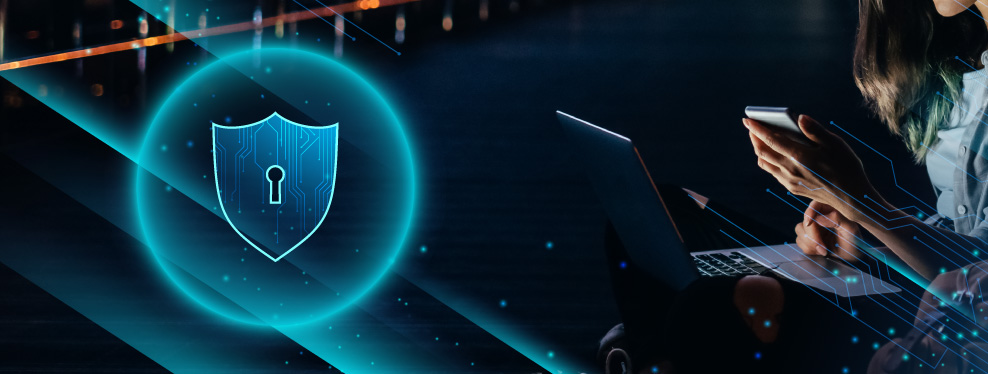
Behind most of the best-selling products seen on the market is an extensive testing phase that helps determine its quality and functionality – otherwise known as product testing.
Product testing (AKA comparative or consumer testing) gathers user feedback as they try out a product first-hand. The knowledge drawn from this method will serve as a roadmap during development until you have a product that resonates with consumers.
In this article, we’ll explore how to do product testing step-by-step to gain qualitative data that can help refine your product ideas and improve UX.
What is Product Testing?
While its quantitative counterpart centers on metrics such as purchase intent and value, qualitative product testing prioritizes insight and usability. In this method, participants perform open-ended tasks with the product prototype while you gather input on their experience.
Product tests are a type of formative user research wherein your data guides how product design will evolve to improve product usage. Furthermore, assessments can also be done on existing products to inform the next round of design changes.
Importance of Product Testing
Confirming Consumer Suitability
How customers use products can differ. Validating consumer suitability involves dividing your target audience into segments and analyzing how each category uses the product. This approach lets you better understand the product from varying customer perspectives.
Finding Design Gaps in Existing Products
To save resources, some companies skip product testing. However, doing so may cause them to overlook possible defects and product failures. Having consumers try out a product and send feedback prevents any hefty costs from returns, recalls, or product redevelopments – saving businesses time and money in the long run.
Meeting Regulations
Abiding by regulations protects the company from potential lawsuits. Rigorous tests must be carried out to guarantee product safety and compliance with government rules. For example, companies manufacturing or importing electronic products in the US are required to abide by safety standards such as hazardous substance restrictions, appliance energy efficiency, and flame retardants.
Keeping Track of Product Development
It’s not enough to conduct a single test throughout the development process. To ensure the success of your final product before launching, it must undergo regular testing. Gathering constant customer feedback at each assessment gives you a clear picture of what you can tweak at each stage to perfect your product.
Updating Products to Remain Competitive
To thrive in an ever-changing and competitive market, businesses have to know how their product stacks up against others. Product testing helps you identify what updates should be made based on a product’s competitive strengths and weaknesses. This also helps companies focus their attention on where it is most needed.

What Will I Need for Product Testing?
Before starting your product assessments, here’s what you’ll need for a productive session:
Time
Schedule your participants a few days ahead to account for any last-minute changes, such as delays or drop-outs. Furthermore, you should also allot about 15 minutes to one hour before each session to debrief your participants and set up tasks.
Materials
Prepare your prototype or current product for participants to test and give their opinions on as well as something for note-taking. For recording equipment, you could use basic facility equipment or get 360° HD equipment from a reputable service provider to see the product in action from multiple angles.
How to Do Product Testing
Depending on your methodology, the following steps can be applied to both Alpha (in-house testing) and Beta (limited user testing in a natural environment) testing phases:
-
Decide on what you want to test
Are you investigating certain features of an existing product to discover potential upgrades? Do you want to analyze early product designs to guide future iterations? Always set clear research objectives or questions beforehand to avoid getting sidetracked.
If you want to evaluate more than one product or compare your product’s performance with competitors, ensure that you’re using products at similar development stages for accurate respondent data.
-
Identify and recruit your target audience
Create a detailed respondent profile representative of your target audience. This is based on a couple of behavioral or demographical factors (e.g., income, profession, age).
To reach your audience, you can leverage sources such as social media, recruitment platforms, ads, and email lists. Since product tests are more effective with small sample sizes, you would only need to recruit about five participants per product testing round to get valuable insights
-
Choose a testing environment
The setting in which product testing is conducted can be divided into two categories:
- Central Location Testing (CLT):
CLT testing involves the active participation of a trained moderator in a central location such as a research facility. In this method, the participants will follow a series of product tasks and answer moderator questions in a controlled setting. - In-Home Usage Testing (IHUT):
IHUT testing is unmoderated and usually completed by test participants in their homes. This involves having the product or prototype sent to them for evaluation. Afterward, they will provide periodic feedback to the research team. While convenient, this method poses threats such as higher variability and fraudulent participation.

- Central Location Testing (CLT):
-
Plan your script and tasks
Come up with various tasks within your timeframe that align with your testing objectives. Keep in mind that all your tasks should be open-ended. This means that they should have more than one correct answer and allow your participants to offer their ideas and feedback.
For example, you would want to ask questions such as:
- Turn this stand mixer on and off
- Try on the pair of sneakers you like and walk around the room
- Use this vacuum to clean up the spilled sand
-
Have participants execute the tasks
While your respondents maneuver the product according to the assigned tasks, make sure to record notes and document the whole process. Another strategy you could implement in this step is encouraging respondents to speak their thoughts during each task.
This “thinking aloud” strategy helps uncover customers’ specific needs and fixes. Thus, giving you an idea of what can be done to address these issues.
Here are some good “thinking aloud” questions you could ask:
- “What’s on your mind right now?”
- “What are you trying to do?”
- “Why is that important to you?”
-
Ask questions and follow up
Aside from asking open-ended questions, you can also incorporate other research methods such as surveys, diaries, and observation to collect additional user feedback before, after, and during each product testing round.
-
Analyze findings and report your results
Once each product testing round has ended, it’s time to extract the main takeaways from your raw data. You can do this by organizing your recorded session data and looking for patterns or trends in what was shared between participants.
Cross-referencing your product test findings unlocks deeper insights and allows you to make data-backed design proposals that you can share with your team and stakeholders. Your report should highlight how the product can be improved before the next round of usability tests or before you hand the designs over to the development team.
Pro Tips to Improve Product Testing
- Adapt a “hands-free” approach. If participants ask you for help or have questions while using the product, try not to answer until the test ends.
- Have the same set of questions across each product test.
- Do a preliminary product test before the actual session.
- Closely observe participant actions and responses. One common problem in product testing is that these two may often drastically contradict each other.
- Use your best judgment during analysis. For example, even if only one user found a specific defect, but you think it’s significant enough to be addressed, it should still be included in the final report.
Looking for your ideal product testing solution? Choose CCam® focus.
Conducting online or in-person focus groups? Testing out a new product on respondents? CCam focus is the premiere recording and streaming solution that delivers uncompromised video and audio quality. Have a unified curation, storage, and sharing solution for your project today.


